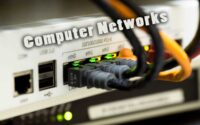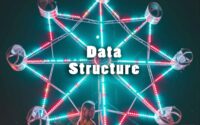Sample Questions on Computer Science and Engineering
Interested users can download the Sample Questions on Computer Science and Engineering from the links enclosed below. Download the Last 5 Years Sample Questions on Computer Science and Engineering Solved along with the Answers of each question.

This Sample Questions on Computer Science and Engineering may vary from the Actual paper. Use the Sample Questions on Computer Science and Engineering as a reference for the exam preparation. Check the Sample Questions on Computer Science and Engineering from this page.
At the bottom of this page, you will find ‘Click here links’ for downloading the Sample Questions on Computer Science and Engineering. Click on the required link & download your related Sample Questions on Computer Science and Engineering to make as a reference for your scheduled preparation.
Computer Science and Engineering Sample Papers
1. BCD numbers are obtained
(a) by converting decimal number to binary
(b) by converting decimal to octal
(c) when each decimal digit is represented by four bit binary
(d) by converting binary to decimal.
2. The ASCII code is for information interchange by a binary code for
(a) numbers only
(b) alphabets only
(c) alphanumeric and other common symbols
(d) none of these
3. The register which keeps track of the execution of a program and which contains the memory address of the next instruction to be executed is known as
(a) index register
(b) instruction register
(c) memory address register
(d) program counter
4. Which of the following is used as storage locations both in the ALU and in the control section of a computer
(a) Accumulator
(b) Register
(c) Adder
(d) decoder
5. The fastest type of memory is
(a) Tape
(b) semiconductor memory
(c) disk
(d) bubble memory
6. In magnetic disks data is organized on the platter in a concentric sets or rings called
(a) Sector
(b) Track
(c) Head
(d) block
7. By taking 2’s complement again of the 2’s complement of a binary, one gets
(a) the 1’s complement
(b) the 2’s complement
(c) the original number
(d) the sign magnitude form of the numbers
8. Microprocessor with ‘n’ address lines is capable of addressing
(a) 2n locations
(b) 2(n + 1)locations
(c) 2n locations
(d) n2 locations
9. For each instructions of program in memory the CPU goes through a
(a) decode – fetch – execute sequence
(b) execute – store – decode sequence
(c) fetch – decode – execute sequence
(d) fetch – execute – decode sequence
10. The performance of cache memory is frequently measured in terms of a quantity called
(a) miss ratio
(b) hit ratio
(c) latency ratio
(d) read ratio
11. In which addressing mode the operand is given explicitly in the instruction
(a) absolute
(b) immediate
(c) indirect
(d) direct
12. 8088 microprocessor has
(a) 16 bit data bus
(b) 4 byte pre-fetch queue
(c) 6 byte pre-fetch queue
(d) 16 bit address bus
13. The no. of address lines required to address a memory of size 32 K is
(a) 15 lines
(b) 16 lines
(c) 18 lines
(d) 14 lines
14. Binary equivalent of decimal number 25 is
(a) 011001
(b) 011111
(c) 010011
(d) 111111
15. Product of matrices A(m x n) and B(n x p) will be matrix C with row and column as
(a) m and p
(b) n and p
(c) p and n
(d) none of these
16. Consider the following program fragment:
main()
{
int a,b,c;
b=2;
a=2*(b++);
c=2*(++b);
}
Which one of the given answers is correct?
(a) a=4,c=6
(b) b=3,c=8
(c) b=3,c=6
(d) a=4,c=8
17. When multidimensional arrays are assigned initial value
(a) Rightmost subscript increases most rapidly
(b) Leftmost subscript increases most rapidly
(c) Rightmost subscript increases least
(d) None of these
18. What is being done by the following function?
int test(int a, int b)
{
int z = (abs(a) >= abs(b)) ? a:b;
return (z);
}
(a) Finds the larger of a and b
(b) Returns the minimum of a and b
(c) Returns the member whose absolute value is largest
(d) None of these
19. The statement FILE *ptr;
(a) Defines a pointer to pre-defined structure type FILE
(b) Defines a pointer to user defined structure type FILE
(c) Defines a pointer to pre-defined data type FILE DESCRIPTOR
(d) None of the above
20. To write a small number of mixed string and integer variable to a file, the appropriate function is
(a) fputs()
(b) fgets()
(c) fprintf()
(d) fwrite()
21. The function fseek()
(a) Finds a given word or phrase in a file
(b) Finds the correct file
(c) Helps access records in the middle of a file
(d) None of these
22. Deletion of a node from a singly linked list, in general, requires adjustment of pointer field of ______ node(s)
(a) 1
(b) 2
(c) 3
(d) 4
23. Insertion of a node at the beginning of a linked list requires adjustment of pointer field of _________ node(s)
(a) Head
(b) Tail
(c) Middle
(d) Top
24. Identify the most appropriate sentence to describe unions
(a) Unions are like structures
(b) Unions contain members of different data types which share the same storage area in memory
(c) Unions are less frequently used in programs
(d) Unions are used for set operations
25. In the expression float *fptr; which is represented as type float
(a) The variable fptr
(b) The address of fptr
(c) The variable pointer to by fptr
(d) None of these
More Question Set on Computer Science and Engineering
| Model Question | Old Question |
| Sample Papers | Mock Test |
| Practice Set | Question Bank |
| Important Questions | Test Papers |
| Typical Questions | Selected Questions |
26. A compiler is
(a) Machine-independent and OS-independent
(b) Machine-dependent and OS-dependent
(c) Machine-dependent and OS-independent
(d) Machine-independent-OS-dependent
27. In case of ordinary int variables
(a) The leftmost bit is reserved for sign
(b) The rightmost bit is reserved for sign
(c) No bit is reserved for sign
(d) None of these
28. Swapping of two numbers is done by
(a) Direct interchanging of values with each other
(b) Storing the value of one in a temp variable and shifting the value of the other into the first and then copying the value of temp to the other
(c) Transfer one number to other number without storing any number in the temp variable
(d) None of these
29. Which of the following are unary operators in C?
(i) ! (ii) Sizeof (iii) ~ (iv) &&
(a) i, iij
(b) i, iii
(c) ii, iv
(d) i, ii, iii
30. A NAND gate is called a universal logic element because
(a) It is used by everybody.
(b) Any logic function can be realized by NAND gates alone.
(c) All the minimization techniques are applicable for optimum NAND gate realization.
(d) Many digital computers use NAND gates.
31. The minimum time for which the input signal has to be maintained at the input of flip-flop is called ______ of the flip-flop.
(a) Set-up time
(b) Hold time
(c) Pulse Interval time
(d) Pulse Stability time (PST)
32. ______ of a D/A converter is determined by comparing the actual output of a D/A converter with the expected output.
(a) Resolution
(b) Accuracy
(c) Quantization
(d) Missing Code
33. Why the decimal number system is also called as positional number system?
(a) Since the values of the numbers are decided by multiplying the values.
(b) Since the values of the numbers are decided by the weight of the values.
(c) Since the values of the numbers are decided by adding the values.
(d) Since the values of the numbers are decided by the position of the values.
34. In which conversion the product of number 16 raised by the location and then add all the products to get the final decimal value?
(a) Octal to decimal
(b) Binary to Decimal
(c) Hexadecimal to decimal
(d) None of these
35. Binary numbers can be converted into equivalent octal numbers by making groups of three bits _____________.
(a) Starting from the MSB
(b) Starting from the LSB
(c) Ending at the MSB
(d) Ending at the LSB
36. There are ______ cells in a 4-variable K-map.
(a) 12
(b) 16
(c) 18
(d) All of these
37. It is a circuit, which has a number of input lines and selection lines with one output line
(a) Sequential Circuit
(b) Multiplexer
(c) Counter
(d) All of these
38. It is a counter where the flip-flops do not change states at exactly the same time, as they do not have a common clock pulse.
(a) Asynchronous Ripple Counter
(b) Synchronous Ripple Counter
(c) Counter
(d) All of these
39. A register can also be used to provide data movements.
(a) Parallel Register
(b) Simple Register
(c) Shift Register
(d) All of these
40. The output of an AND gate with three inputs, A, B, and C, is HIGH when ________.
(a) A = 1, B = 1, C = 0
(b) A = 0, B = 0, C = 0
(c) A = 1, B = 1, C = 1
(d) A = 1, B = 0, C = 1
41. If a 3-input NOR gate has eight input possibilities, how many of those possibilities will result in a HIGH output?
(a) 1
(b) 2
(c) 7
(d) 8
42. The bit sequence 0010 is serially entered (right-most bit first) into a 4-bit parallel out shift register that is initially clear. What are the Q outputs after two clock pulses?
(a) 0000
(b) 0010
(c) 1000
(d) 1111
43. Specifies a star topology featuring a central hub and unshielded twisted-pair wire as the medium.
(a) 10 Base 2
(b) 10 Base 5
(c) 10 Base T
(d) 10 Base 8
44. Which type of switching uses the entire capacity of a dedicated link?
(a) Circuit switching
(b) Datagram
(c) Virtual Circuit
(d) Message switching
45. In OSI model, which of the following layer transforms information from machine format into that understandable by user?
(a) Application
(b) Session
(c) Presentation
(d) Physical
46. A device that links two homogenous packet-broadcast local networks is __________.
(a) Hub
(b) Gateway
(c) Repeater
(d) Bridge
47. In which of the following delivery does packets of a message are logically connected to one another.
(a) A connectionless
(b) A direct
(c) A connection oriented
(d) An indirect
48. What is the name of the algorithm used in CSMA/CD networks in order to avoid repeated collisions?
(a) collision avoidance
(b) crash prevent
(c) exponential back-off
(d) exponential collisions
49. What is the name of routing type in which every incoming packet is sent to every neighbor router except the one from which the packet came?
(a) distribution
(b) multicast
(c) link-state
(d) flooding
50. The number of allowed hops for an IP packet is kept in which of the following field.
(a) AHF
(b) IHL
(c) TTL
(d) ToS



